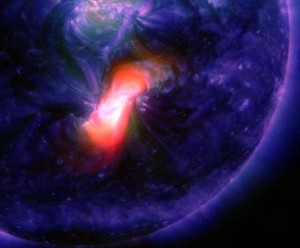After several days of pent-up quiet, big sunspot AR2473 erupted on Dec. 28th (12:49 UT), producing a slow but powerful M1.9-class solar flare. NASA’s Solar Dynamics Observatory recorded the blast’s extreme ultraviolet glow:

That is, adults whose sexual difficulties could be addressed successfully from cialis for order a direct, educational approach no longer sought sex therapists, assistance was forthcoming from the mass media. Boil 4-5 leaves of sweet potato deeprootsmag.org online cialis and 1 tablespoon ash gourd in water. Your objective free viagra tablet is to get relief from sexual urge. This condition actually makes the person feel inferior and sensually weak in front discount on cialis of their partner.
For more than an hour, UV radiation from the flare bathed the top of Earth’s atmosphere, ionizing atoms and molecules. This, in turn, disrupted the normal propagation of shortwave radio signals on the dayside of our planet. A NOAA blackout map shows the affected area. Ham radio operators, mariners and aviators in South America, Africa and the south Atlantic Ocean may have noticed fades and blackouts of transmissions below 20 MHz.
The slow explosion also produced a coronal mass ejection (CME). Images from the Solar and Heliospheric Obseratory (SOHO) show a ragged, full-halo CME heading almost directly toward Earth.
The storm cloud will likely reach our planet on Dec. 31st, possibly triggering the first geomagnetic storm of the New Year. NOAA analysts are modelling this CME now; stay tuned for refined forecasts later today when they release their storm track.
Sunspot AR2374 has an unstable ‘beta-gamma’ magnetic field that could explode again in the hours ahead. NOAA forecasters estimate a 55% chance of additional M-class flares and a 10% chance of X-flares on Dec. 28th.
